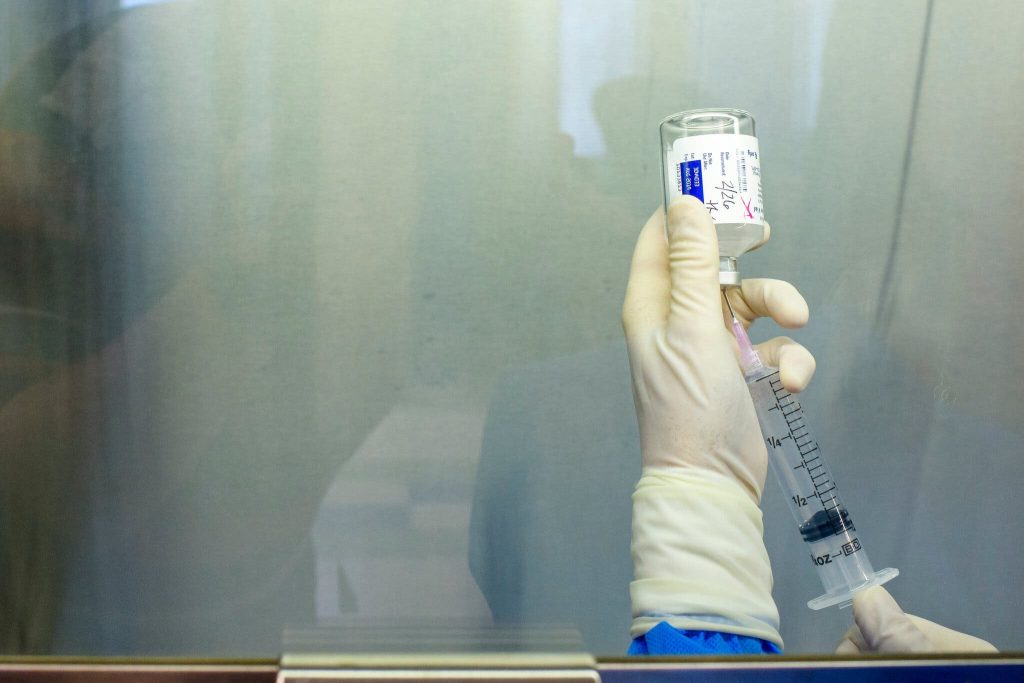Targeted Therapy and Immunotherapy Giving Hope to Cancer Patients
With the continued advancement in medical technology, cancer patients are being offered more options for treatment. A growing number of those with breast and lung cancers are now being spared the dreaded chemotherapy in favor of targeted therapy and immunotherapy, offering new hope to all those affected. Targeted therapies recognize certain molecules that exist only on cancer cells and deliver specific treatment to these areas, while immunotherapies work to stimulate a patient’s own immune system to attack the tumor. Both treatments have a much lower rate of side effects than chemotherapy, which often make patients sick for days or even weeks afterwards. In many cases, these newer therapies also have a higher potential to eradicate cancer completely than chemotherapy alone. With health care professionals now offering more options for those struggling with cancer, there is certainly reason for optimism.
Dr. Seema Doshi, a dermatologist in private practice, was deeply shaken and frightened when she discovered a lump in her breast that was later diagnosed as cancerous.
Reflecting on her experience, Dr. Doshi, then 46 years old, stated, “That completely altered my perspective. I believed I would have to undergo chemotherapy.”
Fortunately, she was mistaken.
Dr. Doshi became a beneficiary of the gradual transformation occurring in breast cancer treatment, which has resulted in a decrease in the number of patients for whom chemotherapy is recommended. For decades, chemotherapy had been regarded as “the norm, the unquestionable approach” for treating breast cancer and various other types of cancer. However, evidence from multiple sources corroborates what many oncologists have observed anecdotally: the significance of chemotherapy is diminishing among several cancer patients.
Advancements in genetic testing now enable the identification of whether chemotherapy would be advantageous. Increasingly, alternative and more effective treatment options have emerged, including estrogen blockers and drugs that selectively target proteins on tumor surfaces. Additionally, oncologists are displaying a growing willingness to reduce unnecessary treatments.
Consequently, thousands of individuals are now spared from undergoing the grueling and feared chemotherapy treatment, which entails hair loss, nausea, fatigue, and the potential for lasting damage to the heart and nerves in the extremities.
This shift away from chemotherapy is also occurring within other types of cancer, such as lung cancer, which accounts for the highest number of cancer-related deaths among both men and women in the United States, claiming the lives of approximately 132,000 Americans annually. Breast cancer, the second leading cause of cancer deaths among women, claims 43,000 lives each year.
Nonetheless, the opportunity to forego chemotherapy remains unevenly distributed and is often influenced by the treatment center and medical professionals involved.
However, select cancer treatment centers are implementing changes in therapy regimens for fortunate patients. Even when chemotherapy is deemed necessary, doctors frequently administer fewer drugs for shorter durations.
“This is an entirely different landscape,” expressed Dr. Lisa Carey, a breast cancer specialist affiliated with the University of North Carolina.
The breast cancer treatment landscape has evolved significantly in the past few decades. Previously, the National Cancer Institute recommended chemotherapy for nearly all patients, but advancements in targeted therapies have since transformed the approach.
Around 15 years ago, the approval of the first targeted drug for breast cancer, Herceptin, marked a significant shift. This drug became an initial treatment option for about 30 percent of patients with a specific protein on their tumor surface. Administered alongside chemotherapy, Herceptin reduced the risk of recurrence by half and the risk of death from breast cancer by a third. Even in studies where Herceptin and another targeted drug were given without chemotherapy, considerable benefits were observed.

These findings challenged the long-standing belief that chemotherapy was an essential component of breast cancer treatment. While change can be daunting, leading oncologists have embraced this evolving approach, fueled by new research and the advent of innovative drugs. It is important to acknowledge the progress made and the potential for more personalized and effective therapies in the cancer community.
‘Some cases keep me up at night.’
For some patients, long-term remission is possible even 10 or 15 years after initial treatment, as shared by Dr. Hortobagyi. In the case of Dr. Doshi, her oncologist, Dr. Eric Winer from the Dana-Farber Cancer Institute, delivered encouraging news. A genetic test of her tumor indicated that chemotherapy wouldn’t provide substantial benefits. Instead, hormonal therapy sufficed to limit the estrogen that fueled her cancer.
Despite her fear of chemotherapy, Dr. Doshi grappled with the decision to forego it. The worry of cancer recurrence loomed. She sought a second opinion and the consulted doctor advised an intensive treatment plan, involving a complete lymph node dissection followed by chemotherapy.
Multiple discussions with Dr. Winer and the insights of four other specialists converged against chemotherapy. Eventually, Dr. Doshi’s husband advised her to trust Dr. Winer’s judgement.
Dr. Doshi’s journey reflects the challenges faced by oncologists themselves. Making the decision to withhold chemotherapy requires considerable courage.

Dr. Winer explained that a particularly difficult scenario arises when a patient’s disease is considerably more advanced than Dr. Doshi’s, having spread beyond multiple lymph nodes. If the patient is not suitable for targeted treatments and has exhausted various chemotherapy options, further treatment is unlikely to help. In such cases, unfortunately, there is no viable treatment.
It is then the responsibility of oncologists like Dr. Winer to deliver this devastating news to the patient.
Dr. Susan Domchek, a breast cancer specialist at the University of Pennsylvania, empathizes with the struggles faced by oncologists.
As an oncologist, it is an enduring concern to strike the right balance between overtreating and undertreating patients, said Dr. Domchek. Some cases remain deeply troubling, particularly those where the risks and benefits of chemotherapy are finely balanced yet the stakes remain unbearably high.
Survival rates are tripling for lung patients.

In the field of oncology, significant advancements have been made in the treatment of lung cancer. Historically, chemotherapy was the primary approach for patients with advanced disease, but it often resulted in unpleasant side effects and had limited success. However, since the emergence of targeted therapies in 2010, the landscape has transformed.
Currently, there are nine targeted drugs available for lung cancer patients, with three receiving approval just this year. Approximately one-quarter of patients can be treated solely with these drugs, and over half of those who began targeted therapy five years ago are still alive. Consequently, the five-year survival rate for advanced lung cancer patients has risen to nearly 30 percent.
Despite these encouraging outcomes, targeted therapies eventually lose effectiveness for the majority of patients. At this stage, chemotherapy becomes the only remaining option. However, in recent years, immunotherapy has also emerged as a notable treatment option. By utilizing drugs that bolster the immune system’s ability to combat cancer, immunotherapy has shown promising results. In an unpublished study conducted at Dana-Farber, two-thirds of patients who were not eligible for targeted therapies were able to receive immunotherapy, either as a standalone treatment or in conjunction with chemotherapy.
The administration of immunotherapy typically spans two years, during which time life expectancy nearly doubles. At the forefront of research, Dana-Farber has witnessed a shift away from chemotherapy as the sole initial treatment for lung cancer. In 2019, only around 12 percent of patients received chemotherapy alone, while 21 percent received targeted therapy as their initial treatment. Notably, 85 percent of the remaining patients received immunotherapy, either alone or in combination with chemotherapy. In contrast, back in 2015, only 39 out of 239 patients received targeted therapy as their primary treatment, with the majority receiving chemotherapy.
These developments have given rise to remarkable observations. Dr. Charu Aggarwal at the University of Pennsylvania has noted instances where patients who underwent immunotherapy are alive, thriving, and exhibit no evidence of cancer five years or more after their initial treatment.
These insights serve as a beacon of hope and progress for the cancer community, as they demonstrate the continually evolving landscape of lung cancer treatment and the potential for improved patient outcomes.
Read more here:











